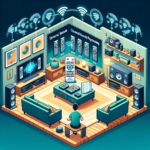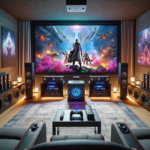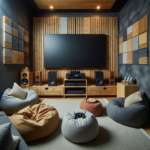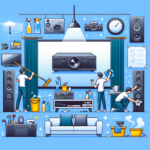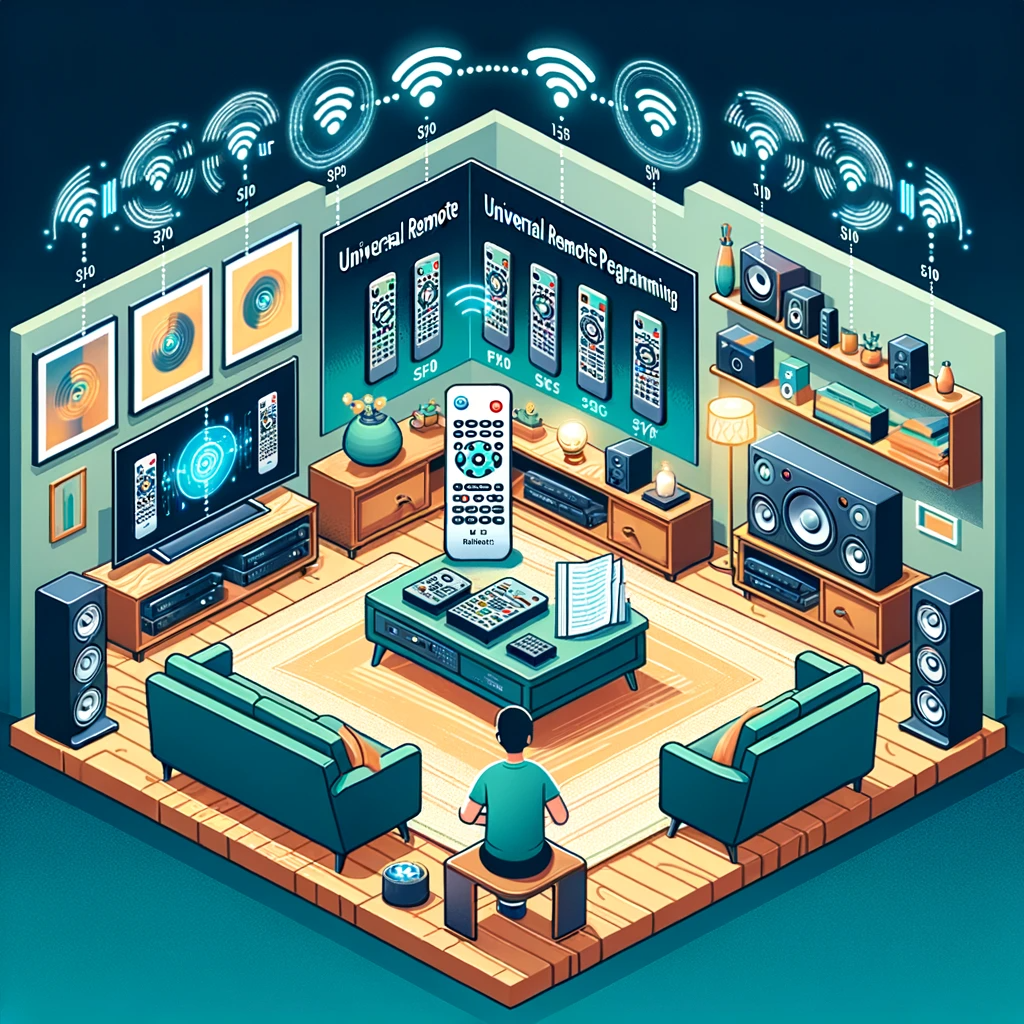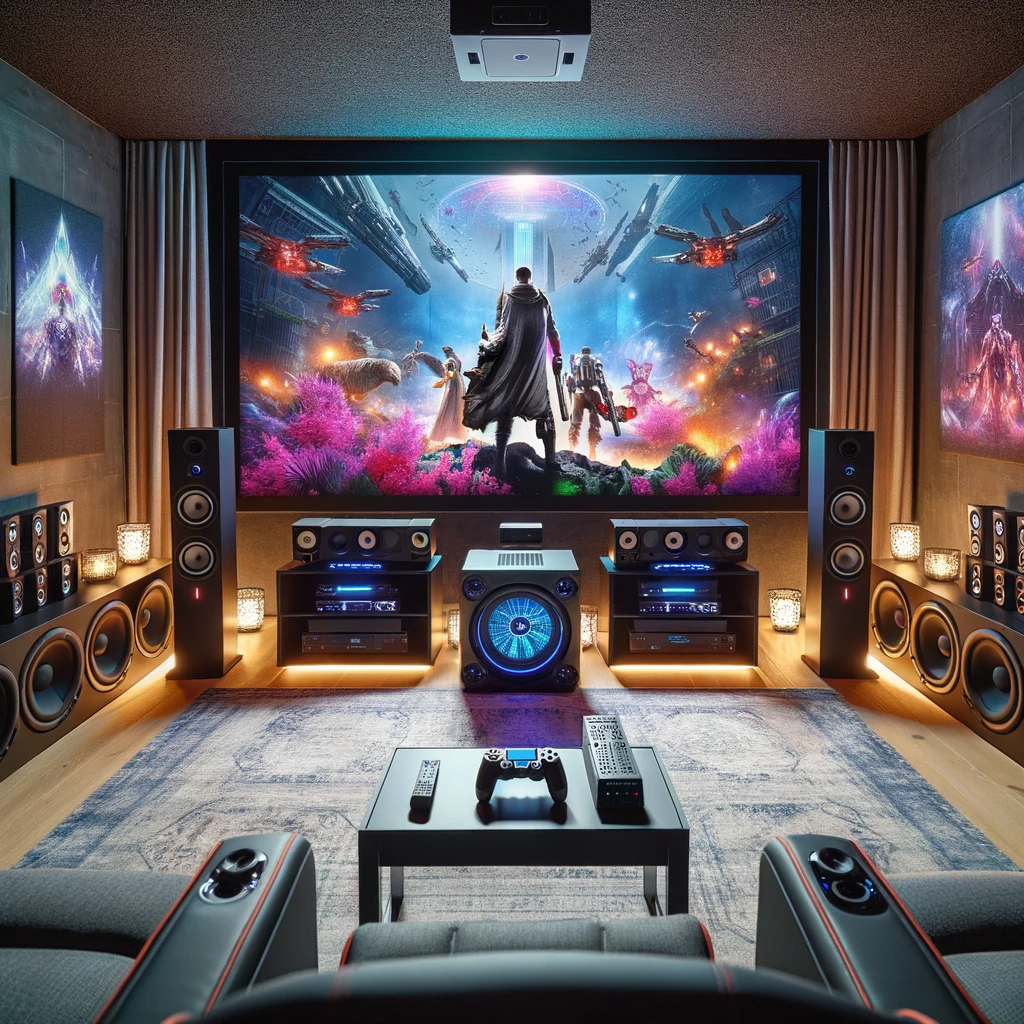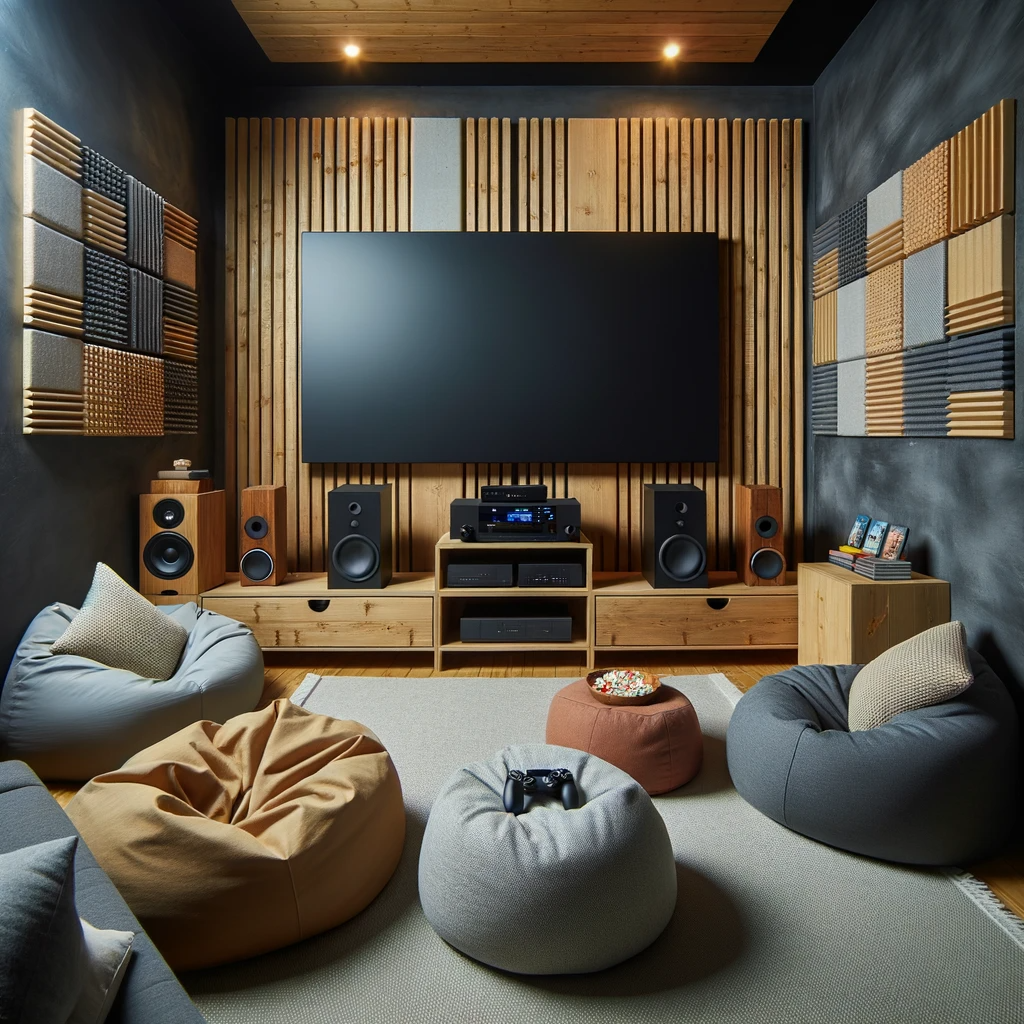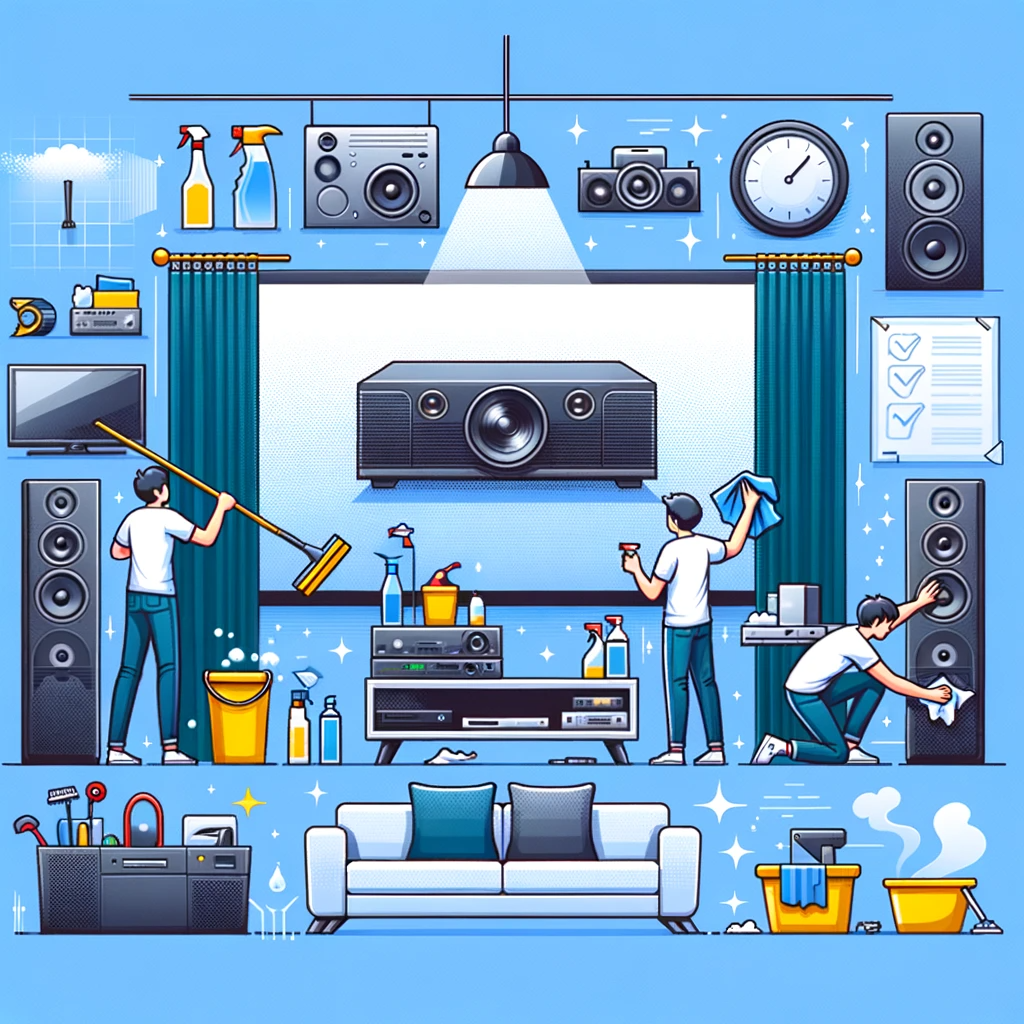Introduction
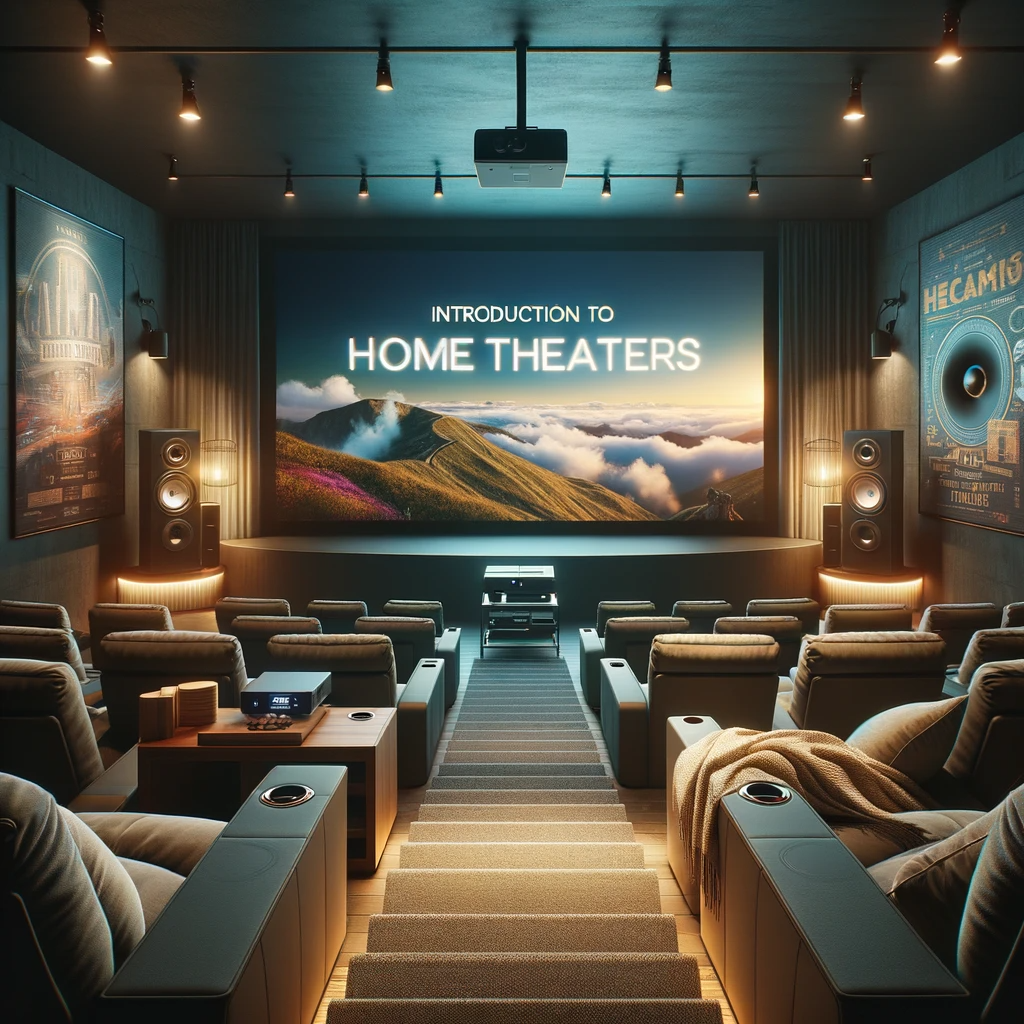
Transforming Entertainment at Home
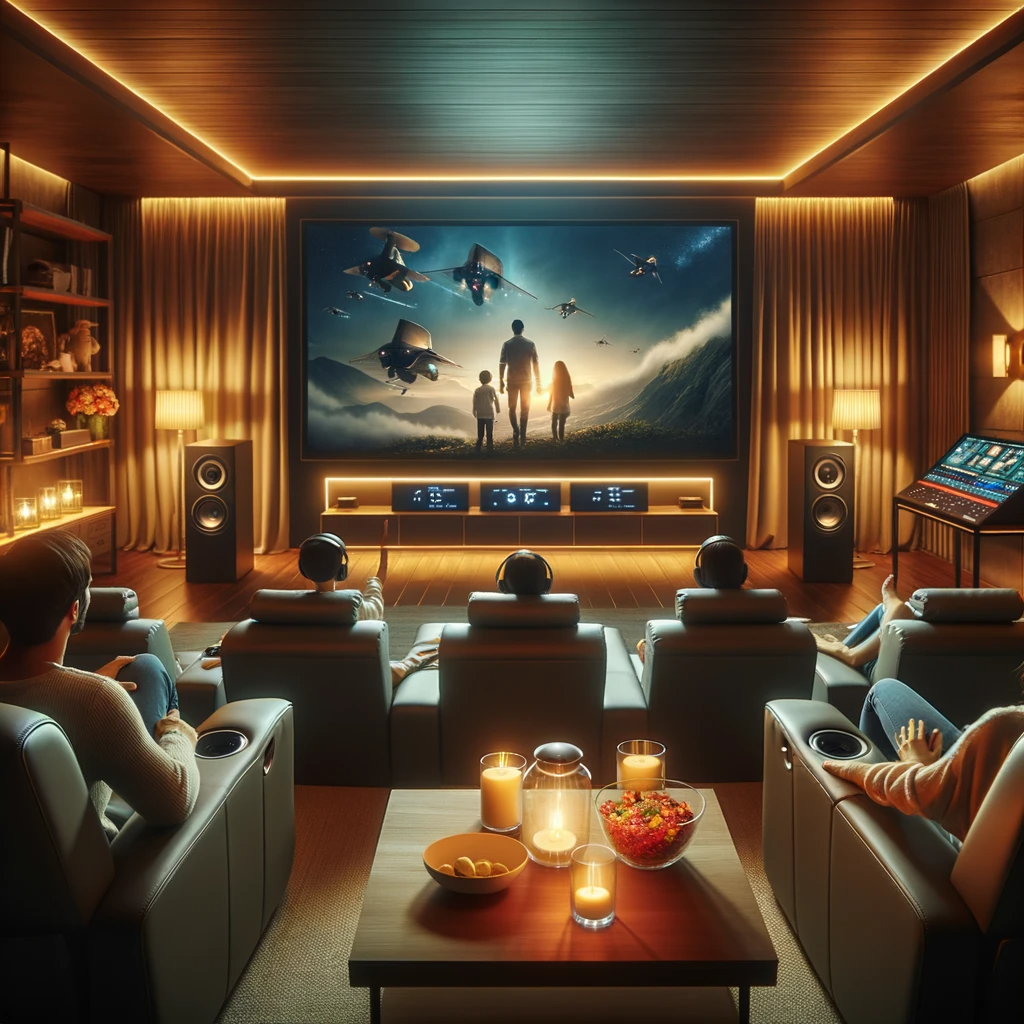
A home theater is a dedicated space or an immersive entertainment system within a home, designed to replicate the cinematic experience. It combines high-quality audio visual equipment with comfortable seating and optimal room acoustics to create an engaging and immersive environment for watching movies, TV shows, gaming, and more.
Rise in Popularity and Demand
The popularity of home theaters has surged in recent years due to several factors. As technology has advanced, the cost of high-quality audiovisual equipment has become more affordable, making it accessible to a wider range of consumers. Additionally, the convenience and comfort of having a personalized entertainment space at home have attracted many individuals who prefer enjoying movies and other media from the comfort of their own living rooms.
Furthermore, the rise of streaming services has revolutionized how we consume content. With on-demand access to an extensive library of movies and shows, people are increasingly turning to home theaters as their go-to destination for entertainment.
The desire for a cinema-like experience without leaving the house has fueled the demand for well-designed and technologically advanced home theater systems. Home theaters provide an opportunity to recreate the magic of cinema within our own homes.
They offer a personalized and convenient way to enjoy entertainment while embracing advancements in audiovisual technology. The growing popularity and demand for home theaters highlight their appeal as an integral part of modern-day leisure activities.
Early Beginnings: The Birth of Movie Projectors and Home Viewing
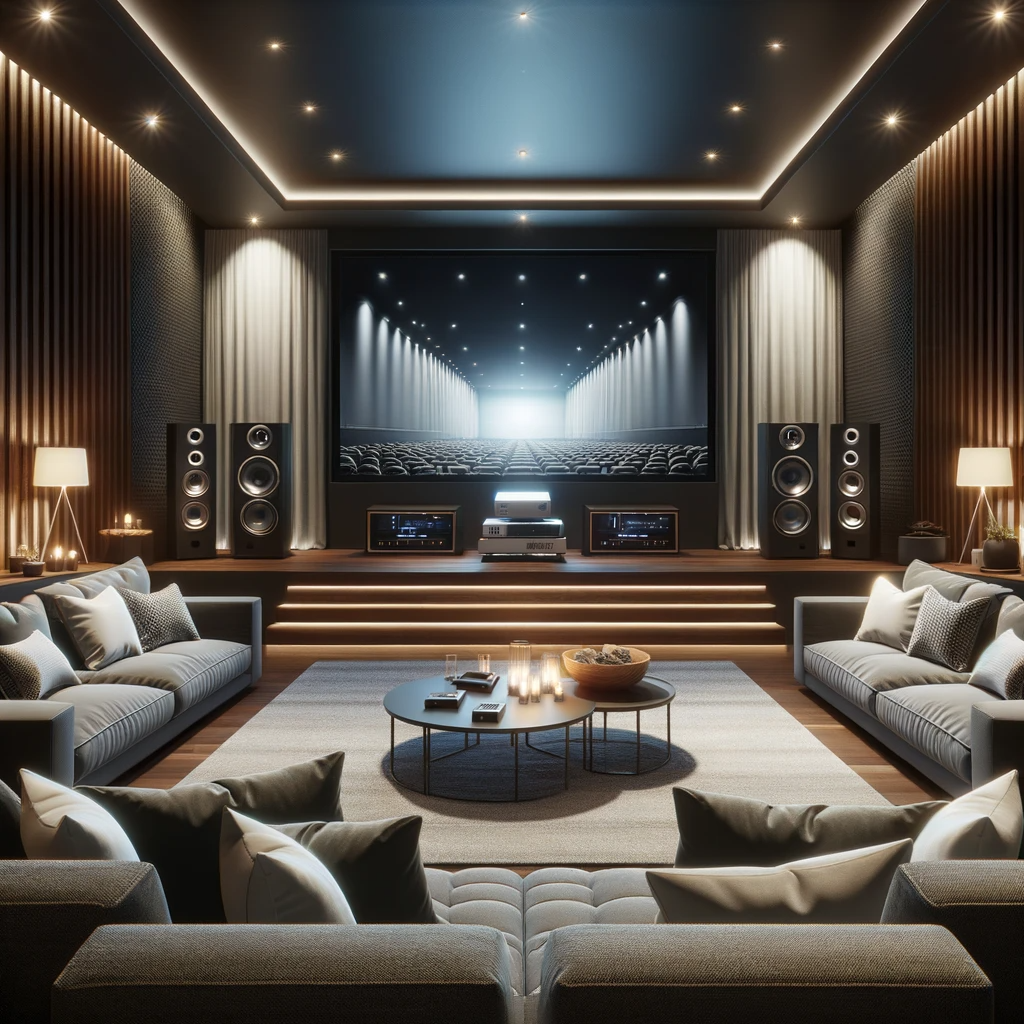
Movie projectors revolutionized the way people experienced films, leading to the birth of home viewing. In the late 19th century, inventors like Thomas Edison and Lumière brothers developed early movie projectors, such as the Kinetoscope and Cinématographe respectively.
These inventions allowed people to view movies outside theaters for the first time. As technology advanced, smaller and more affordable projectors became available to consumers.
In 1965, Sony introduced the first portable projector called Portapak, allowing individuals to enjoy films in their own homes. This marked a significant milestone in the history of home theaters.
Evolution of Technology: From VHS to DVD to Blu-ray
The evolution of technology played a crucial role in shaping home theaters over time. In the 1980s, Video Home System (VHS) tapes became popular for home video consumption.
People could now rent or buy movies and watch them on their TVs using VCRs (Video Cassette Recorders). However, VHS had limitations in terms of picture quality and durability.
In 1997, Digital Versatile Discs (DVDs) were introduced as a superior alternative to VHS tapes. DVDs offered better image quality, clearer sound, and interactive features like scene selection menus.
They quickly gained popularity among consumers due to their compact size and compatibility with various devices. Later on, Blu-ray technology emerged as a breakthrough in home entertainment.
Blu-ray discs offered high-definition video with exceptional picture quality and enhanced audio capabilities compared to DVDs. This advancement allowed viewers to experience movies with stunning clarity and immersive surround sound in their own homes.
Advancements in Audio Systems: Surround Sound and Immersive Experiences
The development of audio systems played a pivotal role in enhancing the immersive experience of home theaters. Surround sound technology revolutionized how viewers perceive sound in movies. Introduced in the 1970s, surround sound systems provided a multi-channel audio experience, immersing viewers in a realistic soundscape.
The most common configuration is 5.1 surround sound, consisting of five speakers and one subwoofer. Continuing advancements led to the introduction of more advanced setups like 7.1 surround sound and even Dolby Atmos technology.
With Dolby Atmos, additional overhead speakers are utilized to create a three-dimensional audio experience, allowing sound to move around the listener dynamically. These advancements in audio systems have brought cinema-like experiences into people’s homes, enabling them to enjoy movies with immersive surround sound and realistic audio effects that enhance the overall viewing experience.
Display Devices
Television options offer various choices, including LED, OLED, QLED, and more. These technologies provide different visual experiences for home theaters. LED TVs use Light Emitting Diodes to illuminate the screen and offer excellent brightness and color accuracy.
OLED TVs, on the other hand, use organic compounds that emit light when an electric current passes through them. This technology provides deep blacks, vibrant colors, and wide viewing angles.
Projectors are another option for home theaters, with different types available based on user preferences. Some projectors use LCD or DLP technology to project images onto a screen or a wall.
Resolutions vary from standard definition (SD) to high definition (HD) and even 4K Ultra HD for sharper and more detailed images. Screen sizes can range from smaller screens suitable for small rooms to larger screens that create a cinematic feel.
Audio Systems
A crucial aspect of a home theater system is the audio setup. Surround sound setups provide an immersive experience by incorporating multiple speakers strategically placed around the room. The most common configurations are 5.1 (five speakers and one subwoofer) or 7.1 (seven speakers and one subwoofer).
For an even more immersive experience, Dolby Atmos configurations utilize additional overhead speakers or upward-firing speakers to create a three-dimensional sound environment. When it comes to audio systems in home theaters, users have the option of choosing between soundbars or dedicated speakers.
Soundbars are compact speaker units that can be mounted below or above the display device for improved audio quality compared to built-in TV speakers but without the complexity of multiple speaker setups. Dedicated speaker systems consist of separate individual speakers installed around the room for each audio channel—front left/right, center channel, surround left/right—providing more detailed sound reproduction and a wider soundstage.
Source Devices
Media players play a significant role in home theater systems, enabling the playback of movies, TV shows, and other media. Blu-ray players are popular choices for high-quality video and audio playback, supporting formats like Full HD or even 4K Ultra HD with HDR (High Dynamic Range) for enhanced picture quality.
Streaming devices, such as Apple TV or Roku, offer access to various streaming services like Netflix or Amazon Prime Video without physical discs. Gaming consoles can also enhance the home theater experience for gamers.
With consoles like PlayStation or Xbox connected to the system, users can enjoy gaming on larger screens with superior audio quality. These gaming consoles support high-resolution gaming and often offer additional features like streaming services integration or virtual reality experiences.
Room Acoustics and Design Considerations
Optimal Room Layout and Seating Arrangements
To achieve optimal viewing angles and an immersive experience in a home theater, careful consideration should be given to the room layout and seating arrangements. Proper placement of the screen or projector is crucial for comfortable viewing.
The screen should be positioned at eye level, ensuring that viewers don’t strain their necks to see the content. Seating arrangements should be planned to provide an unobstructed view from every seat in the room.
This can be achieved by arranging the seats in a slight arc or stadium-style tiered seating. Distance from the screen is also important – too close may result in discomfort, while being too far away can diminish the immersive experience.
Soundproofing Techniques for Noise Minimization
To create a truly immersive audio experience, it’s essential to minimize external noise interference in a home theater. Soundproofing techniques come into play to achieve this goal.
One effective method is using acoustic panels on walls and ceilings to absorb sound reflections, reducing echoes and enhancing audio clarity. Another technique involves sealing gaps around doors, windows, and vents to prevent sound leakage.
The use of double-layered walls with an air gap between them can also help block out external noise sources like traffic or neighbors. Additionally, carpeting or thick rugs on the floor can reduce sound reflections and dampen vibrations.
Installing heavy curtains or blackout blinds over windows further aids in reducing outside noise infiltration while maintaining a controlled lighting environment. By carefully considering room acoustics and implementing effective soundproofing techniques, one can create an ideal space for enjoying movies with minimal distractions and maximum audio immersion in their home theater setup.
Screening Room vs Dedicated Home Theater Room
Advantages of having a dedicated room for a home theater setup
1. Immersive Experience: A dedicated home theater room allows you to create an environment solely devoted to the cinematic experience. With specialized seating, optimized speaker placement, and proper acoustic treatments, you can achieve unparalleled audio and visual immersion.
2. Customization: Unlike a multipurpose living room or bedroom, a dedicated home theater room offers complete control over the design and aesthetics. You can choose the perfect layout, seating arrangement, and decor elements that align with your personal taste and vision.
3. Noise Isolation: By having a separate room specifically designed for your home theater system, you can implement soundproofing measures to minimize external noise interference. This ensures that you can enjoy your movies or shows without distractions from other parts of the house or outdoor sounds.
4. Lighting Control: In a dedicated home theater room, you have full control over the lighting conditions. Install dimmable lights or blackout curtains/blinds to create the perfect ambiance for movie viewing.
This helps eliminate glare on the screen and enhances contrast levels, resulting in better picture quality.
5. Enhanced Privacy: Having a dedicated space means that you won’t have interruptions from other family members or guests while enjoying your favorite content.
This provides a sense of privacy and allows you to fully immerse yourself in the movie-watching experience.
Home Theater Audio Calibration Techniques
The Importance of Audio Calibration for Achieving Balanced Sound
Audio calibration is crucial for obtaining the best sound quality in a home theater setup. Proper audio calibration ensures that the sound produced by the speakers is balanced, consistent, and accurately reproduces the audio intended by the content creators. By calibrating the audio, you can achieve a more immersive experience and enjoy movies, music, and games as they were meant to be heard.
Tools Used for Audio Calibration like SPL Meters
SPL (Sound Pressure Level) meters are essential tools used in audio calibration. They measure the loudness of sounds in decibels (dB), allowing you to ensure that each speaker is producing sound at the appropriate volume level. With an SPL meter, you can adjust individual speaker levels to achieve a balanced soundstage where no single channel overpowers or gets drowned out by others.
Room Correction Software (e.g., Audyssey)
Room correction software plays a vital role in audio calibration by compensating for acoustic imperfections within your room. One popular example of such software is Audyssey. It uses advanced algorithms to analyze room characteristics like reflections and resonances, then automatically adjusts speaker settings to optimize sound quality based on these measurements.
This helps to eliminate any unwanted frequency response issues caused by factors unique to your listening space. Through meticulous audio calibration using tools like SPL meters and software like Audyssey, you can fine-tune your home theater system’s performance for optimal acoustics, ensuring an immersive listening experience with accurate and balanced sound reproduction throughout your viewing area.
Home Theater Connectivity Options
Wireless vs Wired Connection: Cutting the Cords
Wireless connectivity options have become increasingly popular in home theater setups due to their convenience and flexibility. With wireless connections, you can eliminate the need for cumbersome cables and enjoy a cleaner, clutter-free space.
One major advantage of wireless technology is the ability to stream audio and video content directly from your devices, such as smartphones or tablets, to your home theater system. This allows for seamless playback of your favorite movies, music, or streaming services without needing physical media.
While wireless connectivity offers convenience, it’s essential to consider potential limitations. Wireless signals are susceptible to interference from other electronic devices or even walls and furniture that may obstruct the signal strength.
Additionally, if you choose a wireless connection for transmitting audio signals to speakers, there can be a slight delay known as latency. This latency can affect the synchronization between audio and video elements in your home theater experience.
Conclusion
The world of home theaters offers an immersive cinematic experience within the comforts of your own home. By creating an outline on a topic you enjoy and mapping out detailed content about it, you lay the foundation for an engaging and informative piece of writing.
Remember that when setting up your ideal home theater system, considering components like display devices (TVs or projectors), audio systems (surround sound or soundbars), room acoustics and design considerations (layout and seating arrangements), connectivity options (wireless vs wired), and proper calibration techniques all come into play.
With advancing technologies continually improving our home entertainment experiences, establishing a well-designed home theater enables us to enjoy high-quality visuals and powerful sound right at our fingertips.
So why wait? Dive into this captivating realm of cinematic pleasure by creating your own customized home theater setup today!
